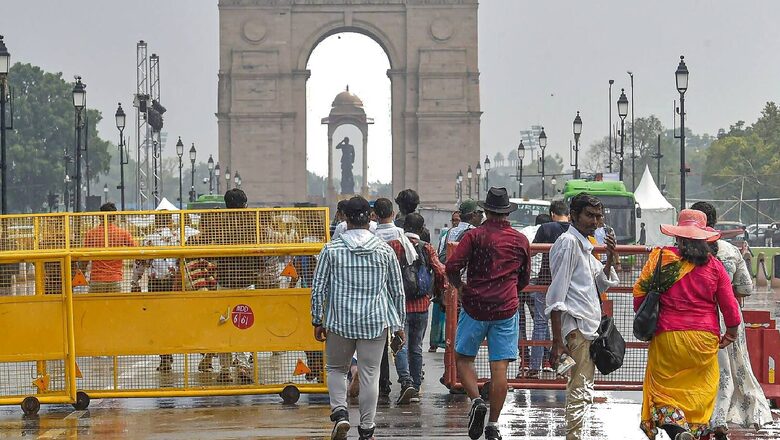
views
Every year just as the monsoon begins to retreat from Delhi, the national capital starts bracing up for a slow and steady rise in the air pollution levels. The daily PM2.5 and PM10 (particulate matter) breach their standard values and both go on an ascending trajectory, signalling the start of one of the most challenging time of the year – the smoggy winter.
This year too, the pollution levels have begun to spike over the national capital soon after the monsoon marked its retreat from Delhi on September 28. Though, the first build-up was washed away by one of the heaviest spell of rains over the region from October 7-13 and pushed the start of bad air days further ahead, it was not until October 17 that Delhi’s air quality dipped to ‘poor’ levels yet again.
What’s The Monsoon Link?
Just as the four-month season draws to a close, an anti-cyclone forms which changes the wind direction and they now travel from the land back to the sea. There are clear skies, with no clouds or rain, and calmer winds, which further slows down the dispersion of pollutants and triggers a build-up in the air. So, the end of monsoon invariably signals the start of high pollution levels over Delhi.
But over the years, even this is happening later than usual. Despite the monsoon arriving well on time, it is taking much longer to withdraw from parts of North-west India — September 28 in 2020 to October 6 in 2021. This year too, it did not begin its retreat well from Delhi until September 28 due to heavy rains at far-end of the season.
Most Severe Daily PM2.5 Levels in Winter
While October rains ensure the residents breathe well for most part of the month, it makes the situation worse for the winter days ahead. The harvesting process is delayed across north-west India, and when the rains finally end, and the monsoon withdraws, it leaves farmers racing against time to finish harvesting, and what follows is a sudden increase in the farm fires. For instance, the share of stubble burning which remained well under 2-3% (negligible) till Tuesday spikes suddenly post October 20.
Over the last few years, the contribution of stubble burning in Delhi’s toxic air peaks towards October-end and November first week, and can go up to nearly 40% on the worst days. This is also the time when the region enters into a festive spree with Diwali celebrations and burning of firecrackers despite the ban imposed by the Court.
Why is Winter Air Worse?
When the temperatures begin to fall, they make the air cool and heavy and it begins to sink – lies much closer to the ground. Not only the overall wind speed drops, it also traps the pollutants and tends to hold them much longer, without dispersing them. Since it is dense, the air pollutants will also tend to circulate near the surface eventually turning the land-locked Delhi with its ever-increasing industrial and vehicular pollution into a gas chamber.
But even if the emissions remain the same as they were in summers, and smoke intrusion from neighbouring states is negligible, the air quality will still begin to deteriorate primarily due to change in meteorological conditions. This year too, even though the contribution of stubble burning was less than 2%, the Air Quality Index (AQI) continued to hover over 250-300 (poor), even crossing the 300-mark (very poor) in certain places in Delhi. The early morning and late evening foggy conditions ensure that the visibility reduced, and mixed with the stagnant pollutants, turning into what is referred to as smog.
According to an analysis led by Centre for Science and Environment (CSE) early this year, the NCR cities experienced the most severe daily (24-hour average) PM2.5 levels with Ghaziabad being the worst hit during the winter of 2021.
Delhi, Noida, Faridabad, Greater Noida, and Gurugram were among the worst peak polluted cities (24-hour average). In fact, Delhi-NCR was the most polluted sub-region with its worst days being almost five times the average.
Read all the Latest News India and Breaking News here




















Comments
0 comment